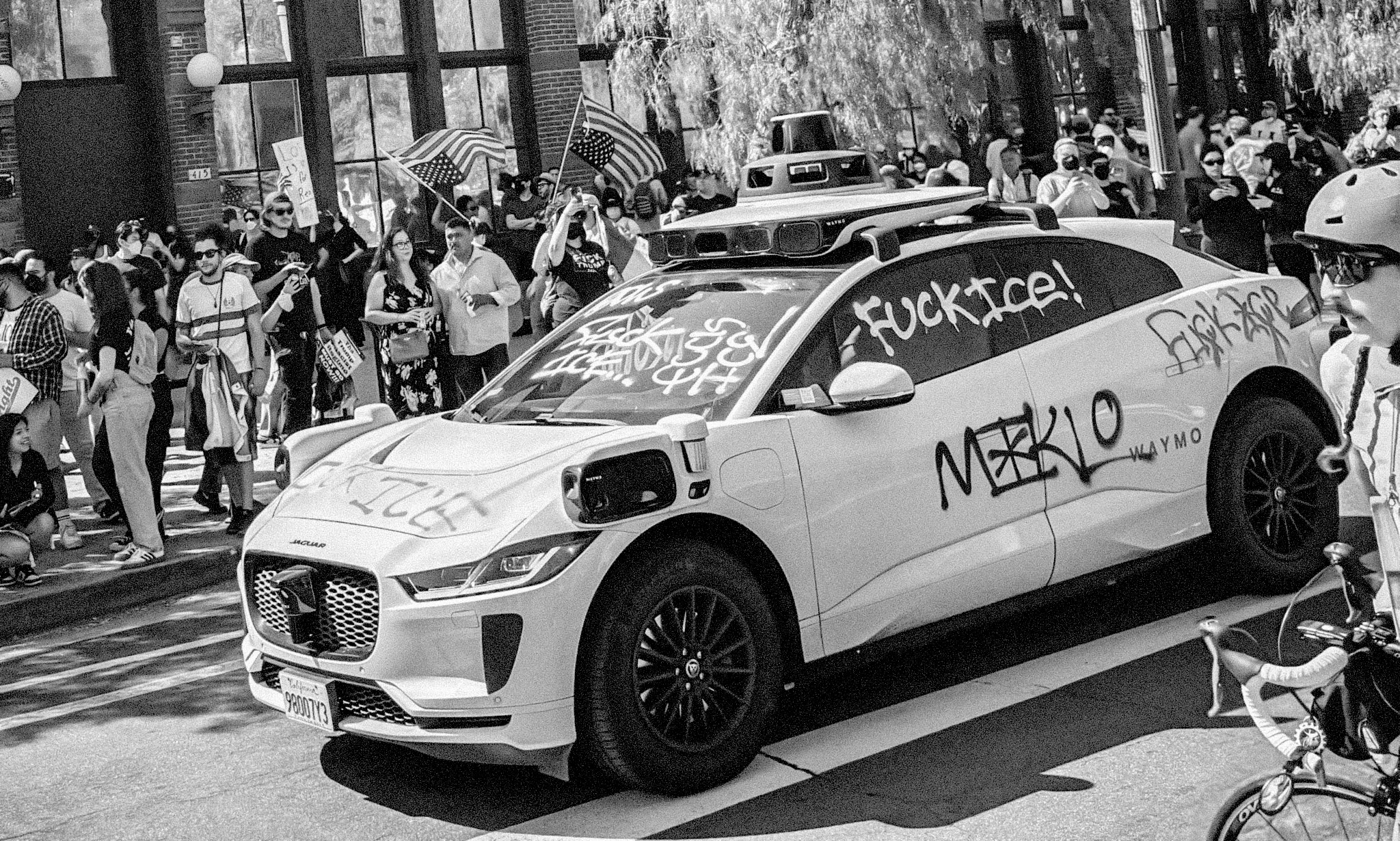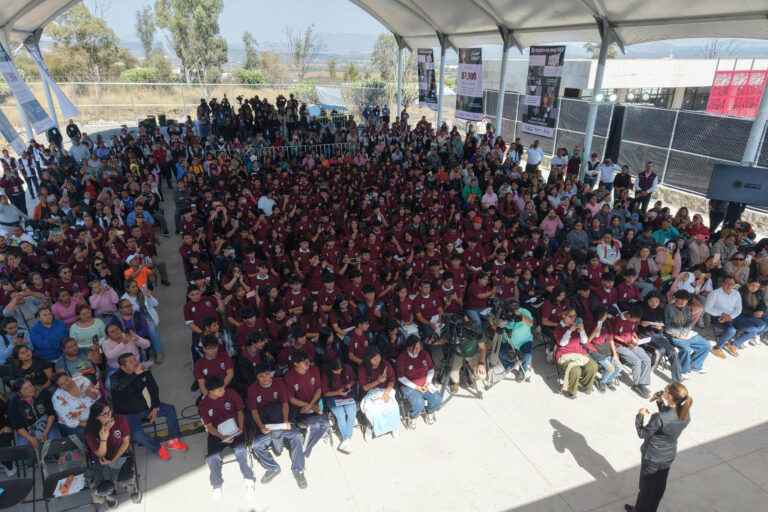War and Rebellion in Los Angeles
This editorial by Magdiel Sánchez Quiroz appeared in the June 10, 2025 edition of La Jornada, Mexico’s premier leftist daily newspaper.
As an instrument of the American elites and an expression of the most nefarious ideas of Yankee supremacy, the political program spearheaded by Donald Trump seeks to recover the United States’s truncated imperial power. His strategy: to combine total war on a global scale against enemy countries, exacerbate the subservience of already subordinate countries and political-economic entities, and construct and eliminate an internal enemy at the national level.
By identifying immigrants as the internal enemy, Trump constructs the narrative that this population—especially Latinos, Asians, and Africans—is the cause of all the country’s problems. The raids against migrants began with the argument that only people with irregular immigration status who had committed a crime would be deported. This was soon proven false. Deportations to detention centers in El Salvador and other countries even included US citizens and people without even a traffic ticket. Among the criteria for identifying them as criminals, in addition to racial criteria, was that they had tattoos (one in three Americans has tattoos!).
Since last weekend, Trump’s anti-immigrant policies have collided with reality: a spontaneous rebellion by Latinos—mainly Mexicans—in Los Angeles. Immigration and Customs Enforcement (ICE) raids targeted workplaces in search of “undocumented” immigrants. This sparked popular anger. Hundreds of people confronted them, preventing them from working. The fighting escalated with police, FBI, DEA, and Homeland Security personnel. It was then that Trump sent 2,000 National Guard troops and 500 Marines to quell the rebellion, and so far, they have been unable to do anything.
The National Guard is the United States’ military reserve. This repressive and occupying force, founded in 1663, before the United States even existed as an independent country, was deployed without the consent of the governor of California (something that hadn’t happened for 60 years). Their presence in the streets, attacking the population, highlights an ongoing civil war that had remained hidden. Immigrants, as an internal enemy, are the target of this internal war.
The state of California alone represents the fifth largest economy in the world, and Los Angeles is the most unequal city in the United States. A third of its residents live below the poverty line. While the price per square meter of land is among the 10 most expensive in the world, 80,000 citizens live on the streets. It is one of the cities where the deindustrialization process of the late 20th century advanced in an exemplary manner, with the gentrification of neighborhoods, real estate speculation, and the super-exploitation of workers, extracting extraordinary income from undocumented immigrants.

In the 1990s, critical urban planner Mike Davis, in City of Quartz, highlighted its utopian promise and postmodern dumping ground for the American dream. He warned of the social disasters that could arise from the prevailing structure. In 1992, following the acquittal of four police officers who had nearly beaten African-American taxi driver Rodney King to death, a massive uprising erupted in the city: 63 people were killed by police, thousands were arrested, and tens of thousands of businesses were burned. At that time, Los Angeles had the second-largest African-American population in the United States. Today, the migrant revolt is raising the alarm about a conflict of unprecedented proportions: more than 40 percent of its population is Latino.
Not everything is rebellion. People are also afraid. State terrorism is still operating. Mexican restaurants are seeing low traffic.
Many people fear deportation. Some have stopped leaving their homes. This internal war threatens to break deep community ties.
The rebellion has overwhelmed social organizations. Unions are paralyzed and mired in contract negotiations. The most active and belligerent forces are those of neighborhood groups fighting for housing, defending the immigrant population, and strengthening community life. For them, today’s challenge lies in combining spontaneous uprisings with long-term resistance strategies. They recognize that the real battle will be fought in the neighborhoods and over prolonged periods.
If the conflict persists or escalates, political elites will likely attempt to resolve the contradictions through political-electoral disputes between Democrats and Republicans and their allied NGOs, attempting to make a domestic war that, like foreign wars, requires both the carrot and the discreet stick.
-
The Poor as Instruments, Not Allies
Welfare programs with political aims are not the same as forging political alliances with the impoverished population created by voracious neoliberal capitalism.
-
Florida, the Race for the Presidency & Opaque Capital
Contemporary Florida is the distorted and advanced mirror of a new form of global governance, where money laundering has not only been tolerated, but institutionalized & updated for the digital age, fed by a murky river flowing from the Global South.
-
People’s Mañanera December 22
President Sheinbaum’s daily press conference, with comments on economic achievements, Sonora development plan, extortion of immigrants, Baja California Sur dam, water treaty with US, nepotism loopholes, and García Luna.




